Table of content
- Nutritional Highlights
- Selection and Storage
- Washing and Drying
- Cutting Techniques
- Equipment Essentials
- Heat Management
- High-Heat Stir-Frying (Recommended)
- Medium-Heat Cooking
- Factors Affecting Cooking Time
- Blanching Pre-Treatment
- Acidic Ingredients
- Dry Roasting
- Soggy Okra
- Burnt Edges
- Stringy Texture
- Recipe 1: Spicy Garlic Okra
- Recipe 2: Mediterranean-Style Okra
Introduction
Okra, scientifically known as Abelmoschus esculentus, is a vibrant green vegetable celebrated for its unique texture and nutritional richness. Often referred to as “lady’s fingers” in some regions, this versatile ingredient is a staple in cuisines spanning from the American South to India, Africa, and the Middle East. While its mucilaginous interior—a source of both culinary intrigue and challenge—can intimidate novice cooks, mastering the art of stir-frying okra transforms it into a delectable dish with minimal effort. The key to success lies in understanding the precise cooking time required to achieve tender-crisp perfection, avoiding the pitfalls of undercooked fibrousness or overcooked mushiness. This article delves into the science and techniques behind stir-frying okra, offering a comprehensive guide to timing, preparation, and flavor pairing.
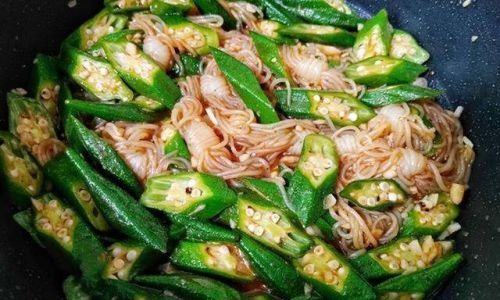
Chapter 1: Understanding Okra’s Culinary Identity
Before diving into cooking times, it’s essential to appreciate okra’s distinct characteristics. Native to tropical regions, okra thrives in warm climates and is harvested when immature, typically 3–5 inches long. Its pod-like structure houses small, edible seeds and a viscous liquid rich in soluble fiber. This “slime,” while beneficial for digestive health, can become undesirable if not managed during cooking. Stir-frying, a high-heat, quick-cooking method, mitigates this issue by caramelizing the exterior while preserving the vegetable’s vibrant color and crispness.
Nutritional Highlights
Okra is a nutritional powerhouse, packed with:
- Vitamins: A, C, K, and folate.
- Minerals: Magnesium, potassium, and calcium.
- Dietary Fiber: Supports gut health and stabilizes blood sugar.
- Antioxidants: Combats oxidative stress and inflammation.
These attributes make okra a worthy addition to balanced diets, particularly for those seeking plant-based protein alternatives.
Chapter 2: Preparing Okra for Stir-Frying
Proper preparation is the foundation of flawless stir-fried okra. Even a slight misstep in this phase can derail the final dish.
Selection and Storage
- Freshness Check: Choose pods that are firm, bright green, and free of blemishes or soft spots. Avoid overly large pods, as they tend to be fibrous.
- Storage: Refrigerate unwashed okra in a breathable bag for up to 3 days. Moisture accelerates spoilage, so avoid washing until ready to cook.
Washing and Drying
- Rinse Gently: Wash okra under cool water to remove dirt. Avoid soaking, as it absorbs excess moisture.
- Thorough Drying: Pat dry with a kitchen towel or use a salad spinner. Residual water promotes steaming during cooking, leading to a soggy texture.
Cutting Techniques
The way you cut okra influences cooking time and texture:
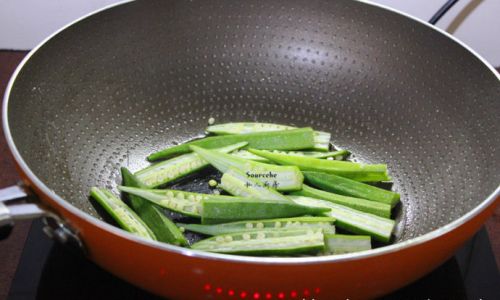
- Whole Pods: Retain moisture but require longer cooking (5–7 minutes).
- Sliced (½-inch rounds): Maximizes surface area, reducing cooking time (3–4 minutes) and enhancing caramelization.
- Diagonal Slices: Aesthetically pleasing and cooks similarly to rounds.
Chapter 3: The Science of Stir-Frying
Stir-frying is a dry-heat cooking method that relies on high temperatures (350–400°F/175–200°C) to sear food quickly. This technique preserves nutrients, locks in flavor, and achieves the coveted Maillard reaction—a chemical process that develops complex, savory notes.
Equipment Essentials
- Wok or Skillet: A wok’s concave shape ensures even heat distribution, but a large cast-iron or stainless-steel skillet works well.
- High-Smoke-Point Oil: Use peanut, avocado, or grapeseed oil to withstand high temperatures without burning.
- Tongs or Spatula: For constant stirring and tossing.
Heat Management
- Preheating: Heat the pan until a drop of water evaporates instantly.
- Oil Temperature: Add oil just before cooking to prevent it from breaking down.
Chapter 4: Cooking Time Mastery
The million-dollar question: How long does it take to stir-fry okra? The answer hinges on three variables: heat intensity, pod size, and desired texture.
High-Heat Stir-Frying (Recommended)
- Sliced Okra (½-inch): 3–4 minutes.
- Whole Pods: 5–7 minutes.
Signs of Doneness:
- Color: Bright green with golden-brown edges.
- Texture: Tender yet slightly crisp (al dente).
- Aroma: Nutty, grassy fragrance.
Medium-Heat Cooking
- Sliced Okra: 5–6 minutes.
- Whole Pods: 7–9 minutes.
Note: Medium heat reduces browning but increases the risk of overcooking. Use sparingly.
Factors Affecting Cooking Time
- Pod Thickness: Thicker pods require additional time.
- Pan Crowding: Overcrowding lowers heat and steams instead of sears.
- Altitude: High-altitude cooking may extend times due to lower boiling points.
Chapter 5: Step-by-Step Stir-Frying Guide
Follow this method for consistently perfect okra:
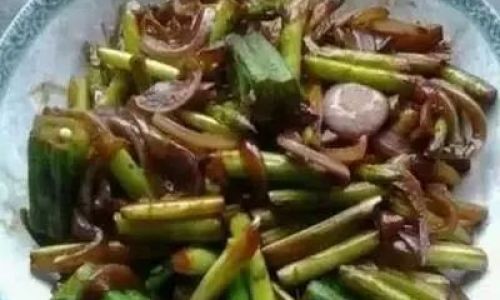
-
Prep the Pan:
- Heat 2 tbsp oil in a wok over high heat until shimmering.
- Add aromatics (minced garlic, ginger, or chili) and stir for 15 seconds until fragrant.
-
Add Okra:
- Toss sliced or whole pods into the pan.
- Spread evenly to ensure single-layer cooking.
-
Stir Vigorously:
- Toss continuously for 1–2 minutes to prevent burning.
- Reduce heat slightly if browning occurs too rapidly.
-
Season and Finish:
- After 3 minutes (sliced), add salt, pepper, and optional spices (turmeric, cumin).
- Cook for 1–2 additional minutes until tender.
-
Optional Add-Ins:
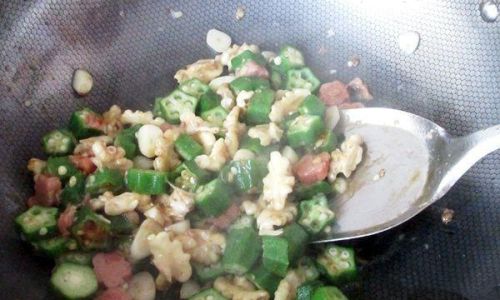
- Tomatoes, onions, or bell peppers (add in the last 2 minutes).
- A squeeze of lemon juice to balance mucilage.
Chapter 6: Achieving Tender-Crisp Perfection
The holy grail of okra cooking is balancing tenderness with a satisfying crunch. Here’s how:
Blanching Pre-Treatment
- Method: Boil whole pods for 2 minutes, then shock in ice water.
- Benefit: Reduces slime and shortens stir-fry time by 1–2 minutes.
Acidic Ingredients
- Lemon/Vinegar: Add a teaspoon during cooking to break down mucilage.
- Tomatoes: Include diced tomatoes in the final minutes for a tangy finish.
Dry Roasting
- Technique: Roast sliced okra in a 400°F (200°C) oven for 10 minutes before stir-frying.
- Result: Intensified flavor and reduced slime.
Chapter 7: Troubleshooting Common Pitfalls
Even seasoned cooks face hurdles. Here’s how to fix them:
Soggy Okra
- Cause: Excess moisture or low heat.
- Solution: Ensure thorough drying; use high heat and avoid crowding the pan.
Burnt Edges
- Cause: Overcrowding or uneven heat.
- Solution: Cook in batches; stir continuously.
Stringy Texture
- Cause: Overcooking or thick pods.
- Solution: Use young, slender okra; monitor cooking time closely.
Chapter 8: Flavor Pairings and Recipes
Okra’s mild flavor complements bold seasonings and fresh herbs.
Recipe 1: Spicy Garlic Okra
- Ingredients: 1 lb okra (sliced), 3 garlic cloves (minced), 1 red chili (chopped), 1 tbsp soy sauce.
- Method:
- Stir-fry garlic and chili for 30 seconds.
- Add okra; stir-fry for 4 minutes.
- Toss with soy sauce; serve immediately.
Recipe 2: Mediterranean-Style Okra
- Ingredients: 1 lb okra (whole), 1 onion (sliced), 1 tomato (diced), 1 tsp smoked paprika.
- Method:
- Sauté onion until golden.
- Add okra; stir-fry for 5 minutes.
- Mix in tomato and paprika; cook 2 minutes more.
Chapter 9: Cultural and Regional Variations
Okra’s adaptability shines in global dishes:
- Southern US: Stewed with tomatoes and bacon.
- Indian: Bhindi masala, simmered in a spiced tomato gravy.
- West African: In gumbo stews or fried with cornmeal.
Conclusion
Stir-frying okra is a dance of precision and intuition. By mastering cooking times, embracing high heat, and respecting the vegetable’s unique properties, even novice cooks can achieve restaurant-quality results. Remember: 3–5 minutes for sliced okra, 5–7 for whole pods, and never shy away from experimenting with seasonings. The reward is a dish that celebrates okra’s delicate balance of crunch and tenderness—a testament to the magic of simple, intentional cooking.
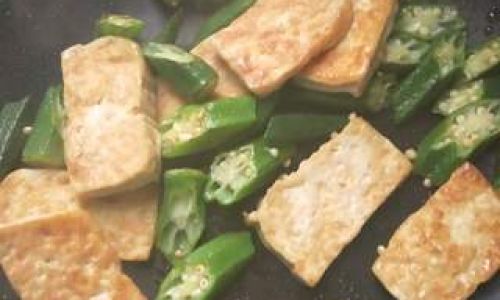
Final Tip: Serve immediately to preserve texture. Leftovers reheat well in a skillet with a splash of water to revive crispness.
This guide ensures that every stir-fry session is a step toward okra perfection. With practice, you’ll learn to gauge doneness by sight, sound, and aroma—transforming a humble vegetable into a culinary masterpiece.
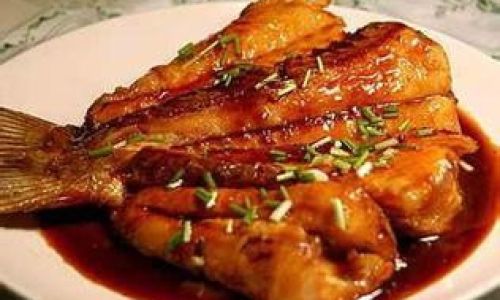

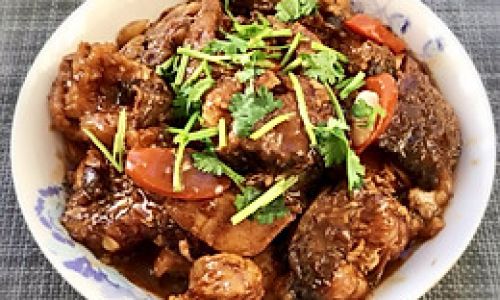
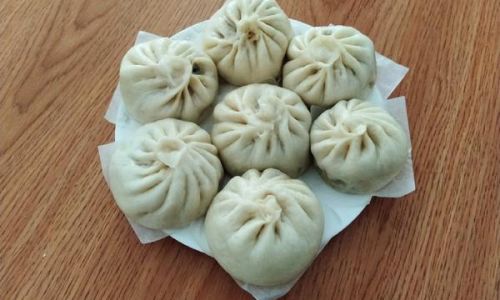
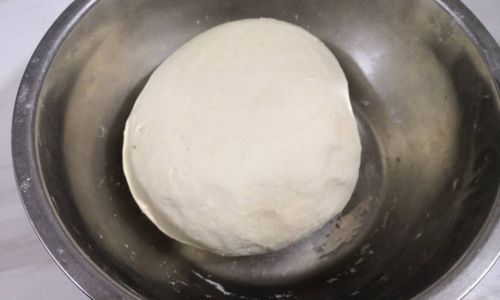
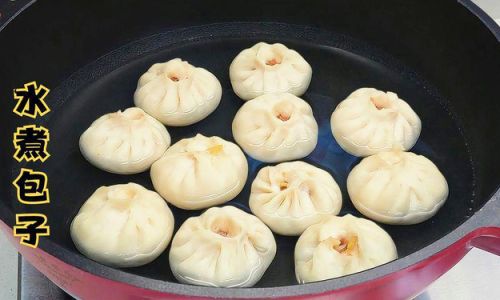
0 comments